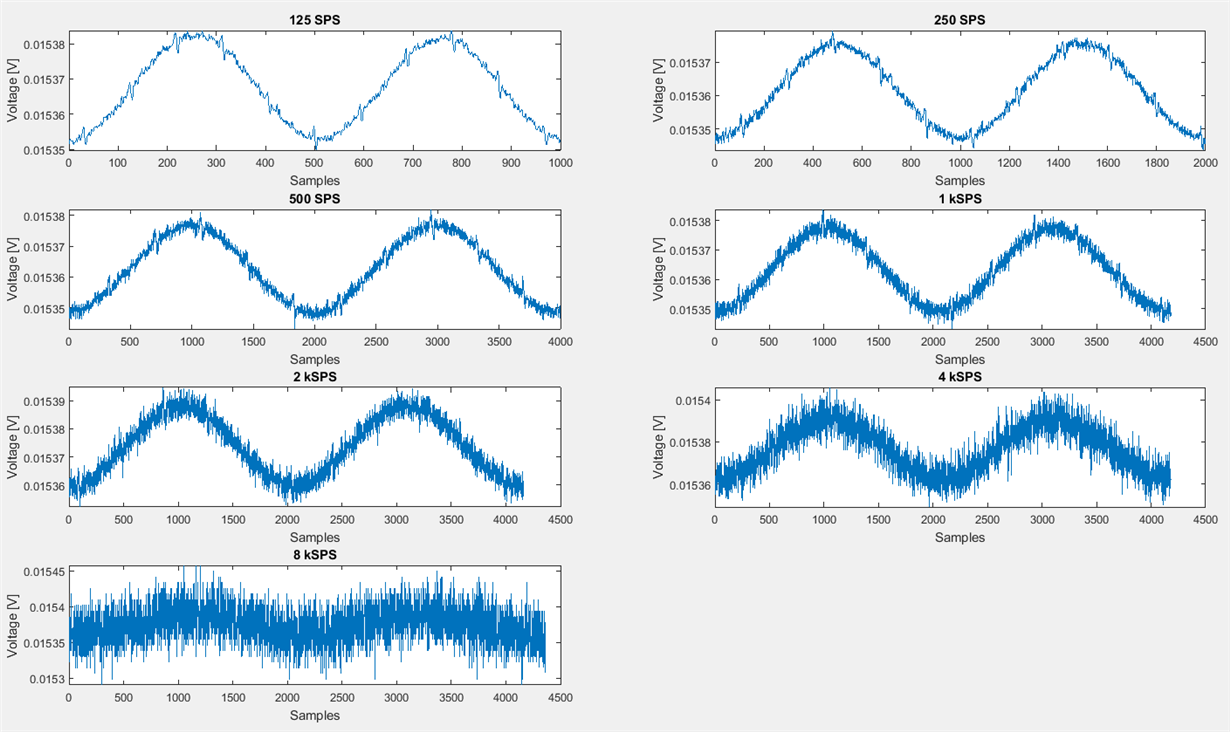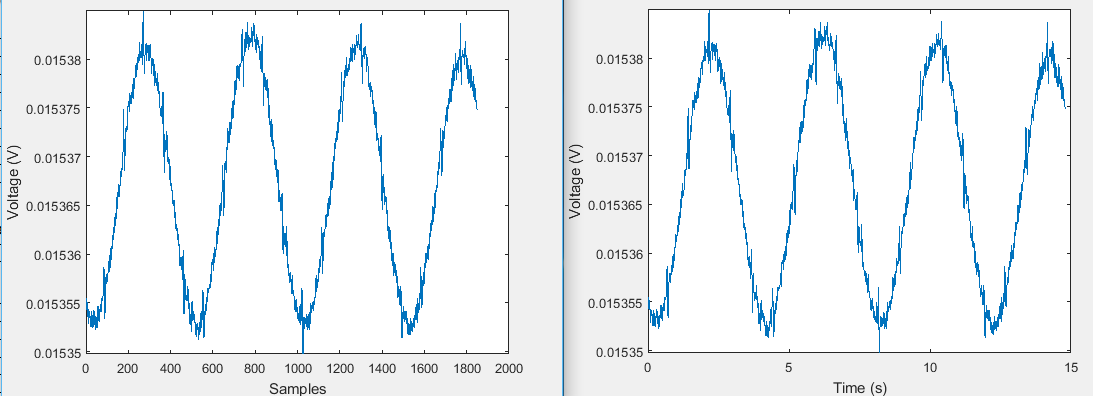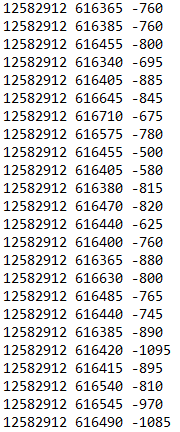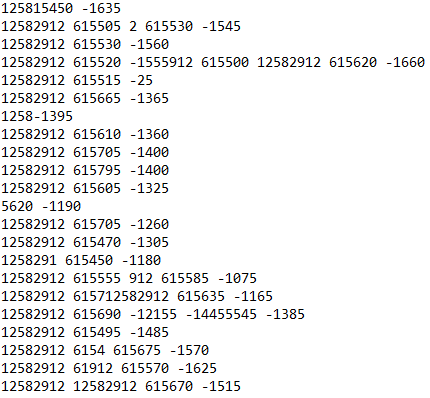Other Parts Discussed in Thread: TM4C123GH6PZ
Hi,
I've continued Laura Cupic's work on interfacing ADS1292R with TM4C123GH6PZ microcontroller:
I've succesfully interface microcontroller with ADS1292R, but the problem occurs when the Data Rate is changed comparing from 125SPS to 8kSPS.
ADS1292R register values:
CONFIG2 -> 0xA0 (reference buffer enabled)
LOFF -> 0x10 (lead-off disabled)
CH1SET -> 0x60 (CH1 enabled, gain 12)
CH2SET -> 0x60 (CH2 enabled, gain 12)
RLDSENS -> 0x2F (chop freq=fmod/16, RLD enabled, RLD inputs from CH1 and CH2)
LOFFSENS-> 0x00 (default)
RESP1 -> 0xEA (resp mod/demod enabled, phase 112.5, internal clock)
RESP2 -> 0x03 (32kHz freq, internal reference voltage)
Signal acquisition: simulator -> ADS1292R -> TM4C123GH6PZ (SPI, SCLK = 1MHz ) -> Laptop (UART, Baud Rate=115200)
Respiration signal and ECG are acquired from simulator (LA, RA, LL and RL), Respiration rate is set to 15 per minute (0.25 Hz), so for the Data Rate of 125SPS, 1000 samples equals to 2 periods of respiration signal as shown on the image. Math is correct for 250SPS (2000 samples), 500SPS (4000 samples) but higher than that number of samples sticks to around 4200 for any higher data rate. Same is for CH2 (ECG).
Questions:
1) Why is number of samples locked for frequencies higher than 500SPS?
2) Why higher frequencies have more noise?







